Author/ Illustrator: Jan Brett
Publishing Information: Scholastic Inc., 1994.
Number of Pages: 30
Genre: Fiction, Picture book
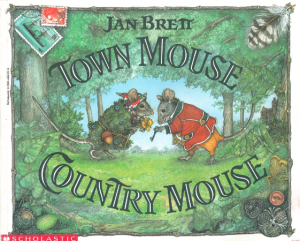
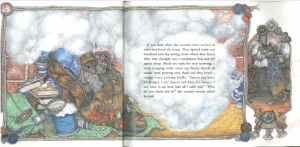
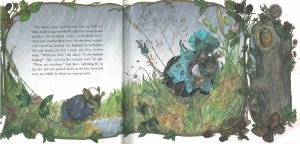
Analysis:
The town mice want to experience the quiet and peaceful countryside while the country mice want to live in a town where food is ready all the time. Therefore, they trade houses. They all have a difficult time living in environments which are completely different from what they are used to. In the end, they realize that their own homes are the most comfortable. So they trade back.
It is a classic story with wonderful illustrations. The text functions as both a mirror for children to reflect themselves during everyday life and a window for them to look at the differences between living in town and in country. The mice trade houses and experience another kind of lifestyle, and finally realize that what suits it best is the best choice, a rule which can be applied in many different aspects such as view of life and view of love.
One problem I found in the book is the class stereotypes presented in the text. Town mice stand for people who live in cities while country mice stand for people who live in the countryside. Town mice always have food prepared for them while country mice have nothing but the beautiful view and natural habitats. Nowadays, people concern more about environment and humanity construction in the city while focus on technology development in rural area.
Perceptually, the book uses a lot of dark colors to depict the confined situation where both the country mice and the town mice are not used to their new living conditions. The pictures are framed for readers to look into the story. The frames are in different artistic styles which attract younger readers. Structurally, text and images overlap. Ideologically, first of all, the book teaches children that the ones that suit them best are the best choices. Secondly, the story stresses family bond. What individuals have outside is not the most important, as long as they have their family company. Thirdly, the author tries to eliminate the class differentiation by pointing out both the advantages and disadvantages of living in the town and living in the countryside.

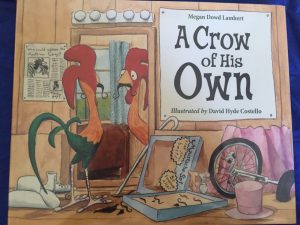
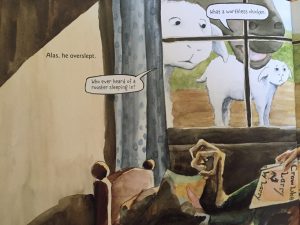
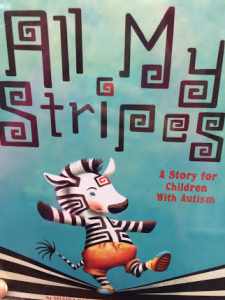

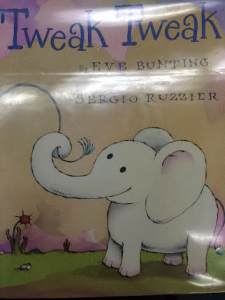

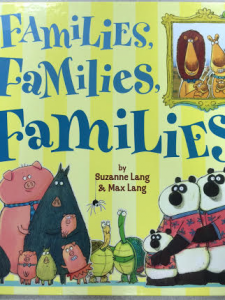
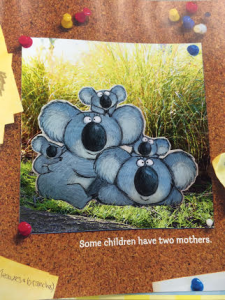
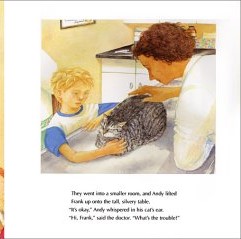 A young girl breaks her arm and it isn’t until she sees that it gets better, that she starts to feel better. As time passes, the young girl gets older and has a son. When her son’s cat breaks his leg, she reassures them both that it’ll get better.
A young girl breaks her arm and it isn’t until she sees that it gets better, that she starts to feel better. As time passes, the young girl gets older and has a son. When her son’s cat breaks his leg, she reassures them both that it’ll get better.

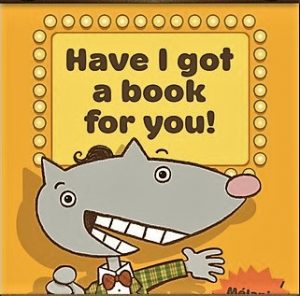
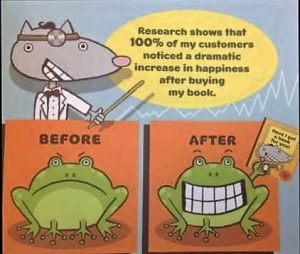 Salesman Mr. Al Foxword claims that he can sell anyone anything, even the book that is being read. Al isn’t very convincing, but by the end of the book, the reader still feels like they have to buy the book.
Salesman Mr. Al Foxword claims that he can sell anyone anything, even the book that is being read. Al isn’t very convincing, but by the end of the book, the reader still feels like they have to buy the book.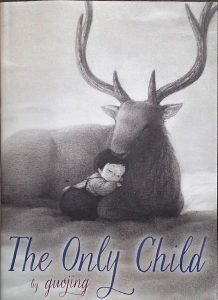
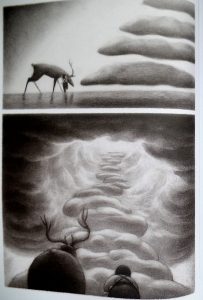 A lonely, only child runs away from home and finds a mysterious stag that takes her to a magical world. In this world, she feels loved and eventually misses home. Guojing takes us through the young girl’s journey back home to her family.
A lonely, only child runs away from home and finds a mysterious stag that takes her to a magical world. In this world, she feels loved and eventually misses home. Guojing takes us through the young girl’s journey back home to her family.
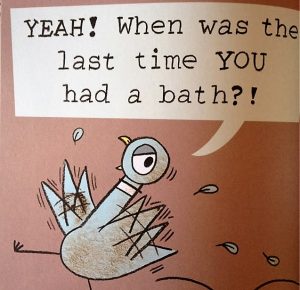 This dirty pigeon uses sarcasm and reverse psychology to get out of taking a bath. When his tactics don’t work and he is forced to take a bath, he realizes that baths aren’t so bad after all.
This dirty pigeon uses sarcasm and reverse psychology to get out of taking a bath. When his tactics don’t work and he is forced to take a bath, he realizes that baths aren’t so bad after all.